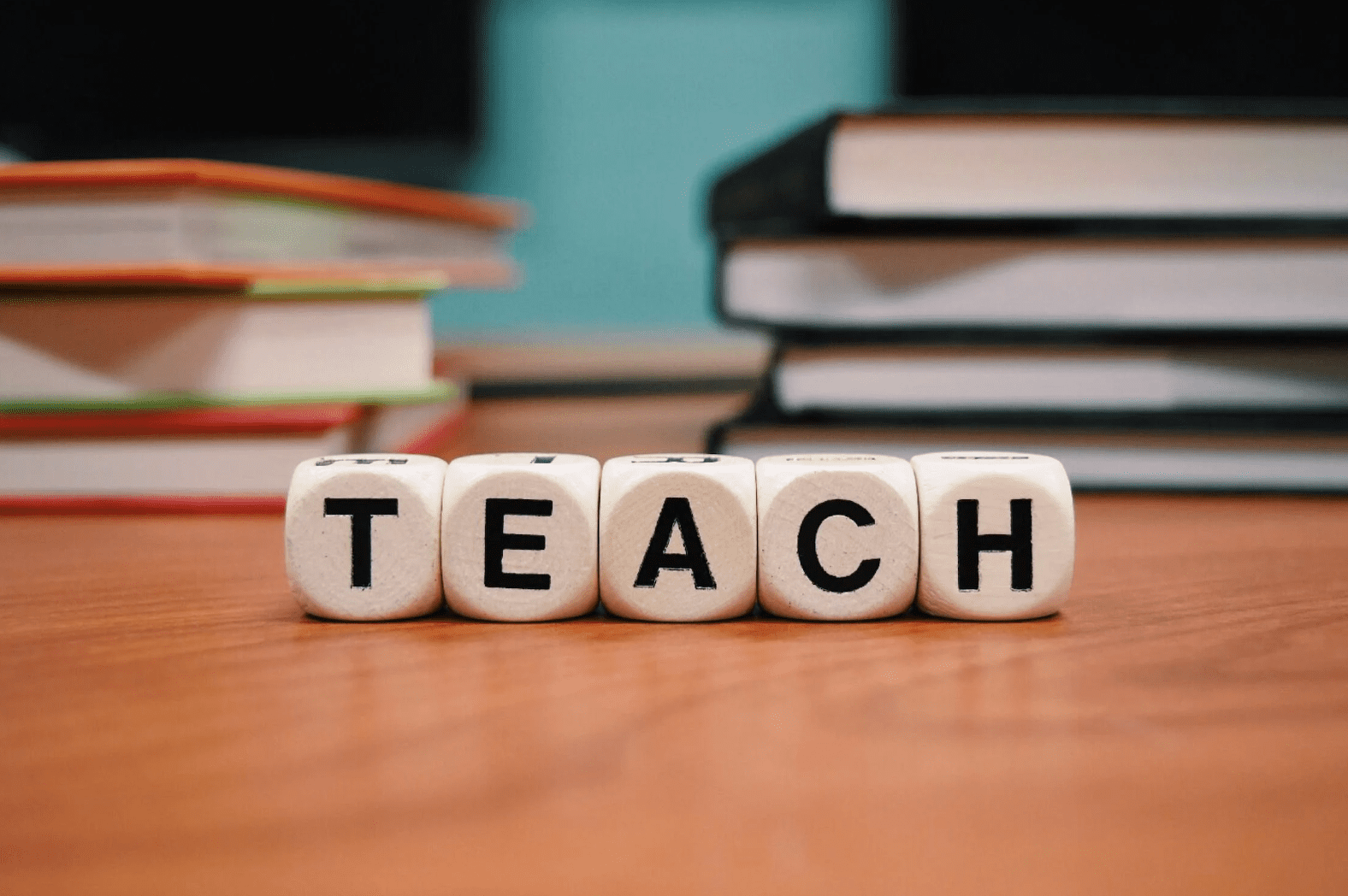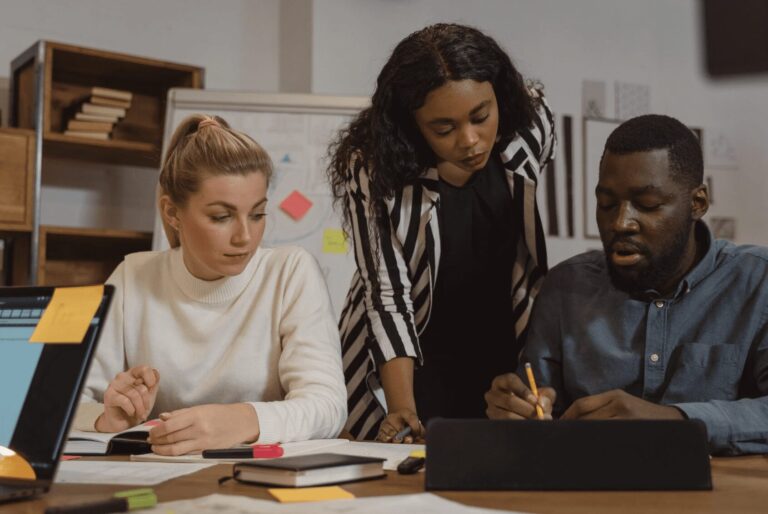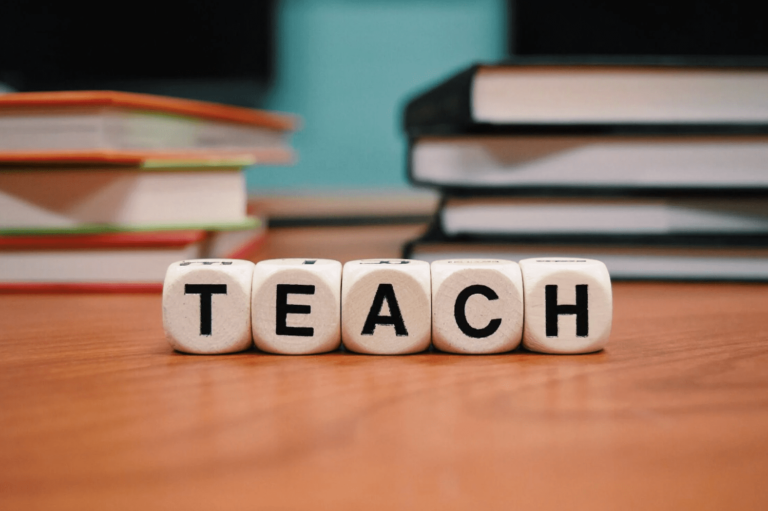

How can I do things smarter not harder?
How to teach smarter, not harder? Teaching is a demanding and rewarding career that needs a profound understanding of the subject matter, the capacity to relate with students, and a passion for education.
Indeed, teachers play a critical role in the learning and development of all students. But how can teachers become more effective and help their students achieve their full potential?
A report from the Sutton Trust, a foundation that strives to enhance social mobility through instruction, has reviewed over 200 pieces of research to identify the elements of effective teaching with evidence of improving attainment. The report, titled “What makes great teaching?” also examines some practices that have no grounding in research or may even be harmful to learning.
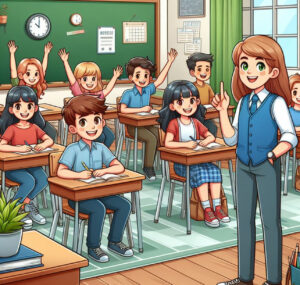

In this article, I will summarize the report’s main findings and provide ten research-based tips on teaching effectively. These tips are not a quintessential or comprehensive list but a “starter kit” for thinking about what makes effective teaching. I will also share some examples and stories from real teachers who have applied these tips in their classrooms.
Know your subject
The first tip from the ten research-based tips to teach effectively is to know your subject. Experts in their field can communicate it to their students clearly and engagingly. They can explain concepts clearly, anticipate and address common misconceptions, provide relevant and meaningful examples, and challenge and extend their students’ thinking.
Subject knowledge is about facts and formulas and understanding how students think and learn about the content. Importantly, teachers need to be aware of ways students approach and solve problems, the difficulties they may encounter, and the strategies they can use to overcome them.


One way to improve your subject knowledge is to keep learning and updating yourself on the latest developments and research in your field. Besides, you can seek feedback from your colleagues, mentors, or experts on your strengths and weaknesses and identify areas where you need more support or training.
For example, Ms. Bagato is a math teacher who wants to improve her subject knowledge of fractions. She enrolled in an online course that covered the theory and practice of teaching fractions, including errors, misconceptions, and difficulties that students face. Also, she joined a professional learning community where she could discuss and share her ideas with other math teachers. Surprisingly, her confidence and competence in teaching fractions improved significantly after taking these steps.
Provide quality instruction
The report found that the second tip is quality instruction. It includes using effective questioning and assessment techniques, providing clear explanations and feedback, reviewing previous learning, modeling good practice, and scaffolding new learning.
Quality instruction is about delivering information or content and engaging students in active and meaningful learning. Teachers should design lessons aligned with the learning objectives and outcomes, cater to the different needs and abilities, and provide opportunities for interaction, collaboration, and reflection.


One way to improve quality instruction is to plan your lessons carefully and systematically, using evidence-based strategies and resources. Similarly, observe other teachers or invite them to keep you and exchange feedback and suggestions on improving your instruction.
An example is my former colleague David, an English teacher who wanted to improve his quality instruction on reading comprehension. He researched the best practices for teaching reading skills, such as skimming, scanning, summarizing, and inferring. Furthermore, David used online tools to create interactive quizzes and games for his students. He also asked his colleagues to observe his lesson and give feedback on his questioning and assessment methods.
Create a positive classroom climate
The report found that the third tip is classroom climate. It refers to the quality of interactions between teachers and students, as well as among students themselves. Likewise, it involves creating a supportive and respectful environment where students feel valued, safe, and comfortable learning.
Classroom climate can affect students’ motivation, engagement, behavior, and achievement. Teachers must establish clear rules and expectations, foster positive relationships, and promote cooperation and collaboration. Also, they should celebrate diversity and inclusion, encourage participation and feedback, and deal with conflicts and challenges effectively.
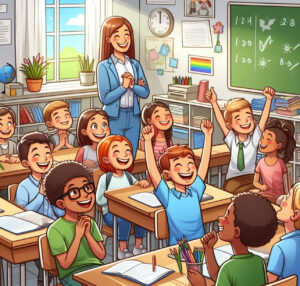

One way to improve your classroom climate is to get to know your students well. Be familiar with their backgrounds, interests, strengths, and needs. You can also involve your students in setting classroom rules and norms. Then, give them some choice and voice in their learning. As well as that, use icebreakers, games, and activities to build rapport and trust among your students.
For example, Maricel is a science teacher who wants to improve her classroom climate. She surveyed to learn more about her students’ preferences, goals, and challenges. Maricel also asked her students to brainstorm and agree on classroom rules and routines. She also used fun experiments and projects to spark their curiosity and enthusiasm for science.
Give effective feedback
The report found that the fourth tip is feedback. A teacher might give feedback on a student’s essay, pointing out areas where the student could improve their writing. Feedback can help students improve their learning, identify their strengths and weaknesses, set goals, and monitor their performance.
You can give feedback in person, in writing, or by other means. Other ways are through video or audio recordings or even through non-verbal. Feedback can be provided in real-time, as the work is being done, or after completion. It can also be provided by stakeholders, including teachers, peers, supervisors, and self. Its effectiveness depends on how it is communicated and interpreted. Effective feedback is specific, timely, actionable, constructive, and supportive. Inefficient feedback is vague, delayed, irrelevant, or demotivating.


One way to improve your feedback is to use the “what, why, and how” model. It means telling your students what they did well or poorly, why it was good or bad, and how they can improve or maintain it. Also, check for understanding and follow up on your feedback.
For example, James is a history teacher who wants to improve his feedback. He used a rubric to assess his students’ essays on the causes of World War I. James gave each student a score and commented on how they met the criteria. He offered each student guidance on improving their essay for the next assignment. Additionally, he asked his students to reflect on their feedback and set a goal for themselves. He noticed that his feedback helped his students improve their writing skills and confidence.
Manage the classroom effectively
The report found that the fifth tip is classroom management. Classroom management is organizing and controlling the classroom environment and activities. Also, it can influence students’ behavior, attention, participation, and learning.
Classroom management can be consistent or inconsistent. Consistent classroom management involves:
- Applying the same rules and consequences for all students and situations.
- Following through on promises and threats.
- Being fair and respectful.
Inconsistent classroom management involves changing the rules and consequences depending on the student or situation, being lenient or harsh without reason, and being biased or disrespectful.
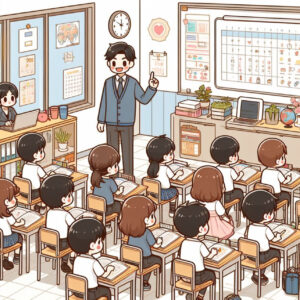

One way to improve your classroom management is to use positive behavior support (PBS). PBS is an approach that focuses on teaching and reinforcing appropriate behavior rather than punishing inappropriate behavior. It involves identifying the function or purpose of the behavior, providing alternative ways to meet the same need, rewarding positive behavior with praise or incentives, and correcting negative behavior with reminders or consequences.
For example, Lisa is a music teacher who wants to improve her classroom management. She noticed that some of her students were disruptive and noisy during her lessons, which affected the learning of other students. Lisa used PBS to understand why they behaved that way and discovered they were bored, frustrated, or seeking attention. She then taught them some expectations and rules for music class, such as listening, participating, and respecting. Moreover, she gave them choices and challenges in their music activities, such as choosing their instruments, songs, or partners or trying different difficulty levels. She also praised and rewarded them for following the rules and showing improvement and reminded or reprimanded them for breaking or causing trouble. Surprisingly, she found that her classroom became more orderly and harmonious after using PBS.
Use assessment for learning
The report found that the sixth tip is assessment for learning. Assessment for learning is assessment data to inform and improve teaching and learning. Particularly, assessment for learning can help teachers and students identify what they know and can do, what they need to learn and do next, and how to get there.
Assessment for understanding can be formative or summative. The former is ongoing assessment during the teaching and learning, such as quizzes, observations, discussions, or self-assessments. At the same time, the latter is the final assessment at the end of a unit or course using tests, exams, projects, or portfolios.
Moreover, assessment for learning can be diagnostic or evaluative. Diagnostic assessment identifies the strengths and weaknesses of a student’s prior knowledge and skills, such as by using pre-tests, surveys, or interviews. Evaluative judgment measures the progress and achievement of a student’s current knowledge and skills using post-tests, rubrics, or grades.


One way to improve your assessment for learning is to use the “plan-do-review” cycle. Plan your evaluation based on your learning objectives and outcomes, use various methods and tools, and review it using feedback and reflection. Also, involve your students in the assessment process by setting goals, monitoring their learning, peer-assessing each other’s work, and acting on feedback.
For instance, Mark is a geography teacher who wants to improve his assessment for learning. He planned his review based on the curriculum standards and his lesson objectives. Along with this, he used a variety of formative and summative assessments to check his students’ understanding of different topics, such as climate change, natural disasters, and urbanization. He also used various diagnostic and evaluative judgments to identify his students’ prior knowledge and current achievements. Moreover, he reviewed his assessment data regularly and used it to adjust his teaching strategies and provide feedback to his students. As well as that, he asked his students to set their own goals, track their progress, assess their work and their peers’ work, and act on feedback. He found that his assessment for learning helped him and his students improve their teaching and learning outcomes.
Develop a professional mindset
The report found that the seventh tip from the ten research-based tips on teaching is the professional mindset. Professional mindset is teachers’ attitude and behavior toward their profession and development. Indeed, a professional mindset can affect teachers’ motivation, commitment, confidence, and effectiveness. It should be noted that a professional mindset can be positive or negative.
A positive professional mindset involves having high expectations for oneself and one’s students and being passionate about one’s subject and teaching. Additionally, it is being reflective about one’s practice and performance, being open to feedback and change, being cooperative with colleagues, and being lifelong learner. A negative professional mindset involves having low expectations for oneself and one’s students, being bored or burned out by one’s subject and teaching, being defensive or resistant about one’s practice and performance, being closed to feedback and change, and isolated from one’s colleagues and being stagnant in one’s learning.


One way to improve your professional mindset is to engage in continuous professional development (CPD). CPD is the process of updating and enhancing one’s knowledge, skills, and competencies as a teacher. Moreover, CPD can involve formal or informal activities, such as attending courses, workshops, or conferences, reading books or journals, watching videos or podcasts, joining online communities or networks, conducting action research or inquiry, or mentoring or coaching others.
Anna is an English teacher who wants to improve her professional mindset. She enrolled in a CPD course on how to use technology in language teaching. Besides, she learned about new tools and apps she could use in her lessons, such as podcasts, blogs, and games. In the same way, she met other language teachers who shared their experiences and ideas. She applied what she learned in her classroom and evaluated the impact on her students’ learning. Additionally, she kept a reflective journal about her successes and challenges. Then, she found that her CPD course helped her develop a more positive and proactive professional mindset.
Collaborate with your colleagues
The report found that the eighth tip is collaboration. Collaboration is working with others to achieve a common goal or purpose. It can help teachers become more effective in their teaching.
It should be noted that collaboration can be formal or informal. Formal partnership involves participating in structured and organized activities like teams, committees, or projects. Informal collaboration involves spontaneous and voluntary interactions, such as chats, discussions, or exchanges.
Furthermore, collaboration can be horizontal or vertical. Horizontal partnership involves working with peers with similar roles or responsibilities, such as grade-level or subject-area teachers. Standing block involves working with people with different responsibilities, such as administrators, specialists, or parents.


One way to improve your collaboration is to use the “co-teaching” model. Co-teaching is a form of partnership where two or more teachers are responsible for preparing, giving, and assessing teaching for a group of students. Co-teaching can involve different approaches, such as team teaching, station teaching, parallel teaching, alternative teaching, or teach-one assist.
For example, John is a social studies teacher who wants to improve his collaboration. He partnered with a math teacher to co-teach statistics and data analysis. They planned their lessons together and decided to use the station teaching approach, where they divided the class into two groups; each taught a different aspect of the topic at various stations. Moreover, they observed each other’s teaching and gave each other feedback. They evaluated their students’ learning using an assessment tool and found that co-teaching helped them enhance their instruction and student outcomes.
Use evidence-based practices
The ninth tip is evidence-based practice. Evidence-based practice uses research evidence to inform and improve teaching decisions and actions. It can help teachers select the most effective strategies and resources for their student’s needs and goals.
Evidence-based practice can be internal or external. Internal evidence-based practice involves using data from one’s classroom or school, such as test scores, observations, surveys, or portfolios. It also uses data from other sources, such as research studies, reports, or reviews.
Moreover, it can be descriptive or prescriptive. Descriptive evidence-based practice involves describing what is happening or what has happened in one’s teaching context, such as by analyzing data, identifying patterns or trends, or reporting findings. Prescriptive evidence-based practice involves prescribing what should happen or what should be done in one’s teaching context. It includes making recommendations, setting goals or actions, or implementing changes.


One way to improve your evidence-based practice is to use the “plan-act-observe-reflect” cycle. Plan your teaching based on the best available evidence and act on your plan by implementing your teaching strategies and resources. Also, observe the effects of your education on your students’ learning and reflect on your education by evaluating your data and evidence.
For example, Emma is an art teacher who wants to improve her evidence-based practice. She planned her teaching based on research evidence suggesting that using portfolios can enhance students’ creativity and self-regulation. Additionally, she acted on her plan by introducing portfolios to her students and guiding them in creating and using them. She observed the impact of her teaching by collecting and analyzing her students’ portfolios and feedback.
Seek feedback and support
The tenth tip is feedback and support. Feedback and support are the information and assistance that teachers receive from others to improve their practice and performance. Also, they can help teachers identify their strengths and weaknesses, set goals and plans, solve problems and challenges, and celebrate achievements and successes.
Feedback and support can be formal or informal. Proper feedback and support involve participating in official and regulated activities, such as appraisals, evaluations, or reviews. Informal feedback and support involve casual and optional interactions, such as compliments, suggestions, or advice.
Also, this can be internal or external. Internal feedback and support involve receiving information and assistance from within one’s classroom or school, such as from students, colleagues, or administrators. External input and support involve receiving information and assistance from outside one’s classroom or school, such as mentors, coaches, or experts.


One way to improve your feedback and support is to use the “ask-tell-ask” model. You should ask for feedback and help when needed, tell others what kind of feedback and support you want, and ask others how they feel about giving you feedback and support. Be open-minded, respectful, and appreciative when receiving feedback and support from others.
For example, Tom is a physical education teacher who wants to improve his feedback and support. He asked for input and help from his mentor, an experienced PE teacher from another school. Tom told his mentor what his goals were and what kind of feedback and support he was looking for. He asked his mentor how he felt about giving him feedback and support. Furthermore, he listened carefully, asked questions, and thanked his mentor for his input and support. He noticed that he was more confident and effective in his teaching due to his feedback and support.
Conclusion
These tips are not supposed to be rigid rules that teachers should follow. Instead, it is a flexible framework teachers can use to adapt their teaching to the specific context, students, goals, and needs.
I hope this article has helped you. If you have any questions or comments on how to teach smarter, not harder feel free to leave them below. Thanks for reading, and see you at the next one!

